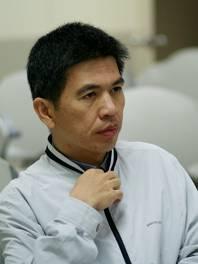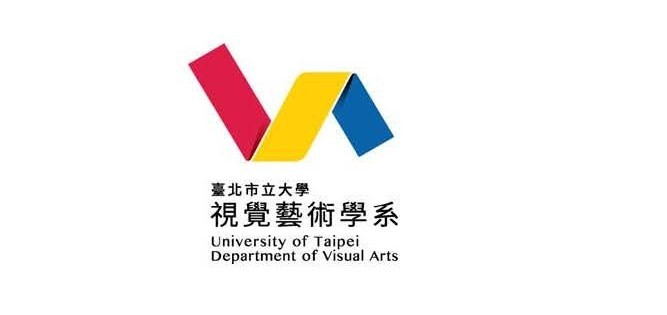吳宜澄 教授

| 聯絡電話:23113040-6925 | ||||||
| E.mail:ywu@uTaipei.edu.tw | ||||||
| 學歷:美國阿拉巴馬大學博士 | ||||||
| 專長學科:研究法、藝術心理學、美學 | ||||||
| 專書 | ||||||
| 作者 | 年 | 書名 | 出版社 | 地點 | ||
| 吳宜澄 | 2005 | 從美學到視覺藝術研究法(二):以模糊理論、相對論、測不準原理等來詮釋美學的多元思想 | 作者 | 台北市 | ||
| 吳宜澄 | 2004 | 論文寫作格式手冊,再版 | 桂冠 | 台北縣 | ||
| 盧姵綺 | ||||||
| 吳宜澄 | 2003 | 論文寫作格式手冊 | 桂冠 | 台北縣 | ||
| 盧姵綺 | ||||||
| 期刊 | ||||||
| 作者 | 年 | 論文題目 | 期刊名 | 出版單位 | ||
| 吳宜澄 | 付梓中 | 〈WebQuest與傳統教學在視覺藝術教學之比較研究:以國小三年級「反覆形式」單元為例〉 | 《藝術學報》 | |||
| 張博欽范宜善葉明勳吳宜澄 | 2003 | 多媒體數位藝術時空性質之探討:以數位動畫藝術創作為例視覺藝術 | 視覺藝術 | |||
| 研討會論文 | ||||||
| 作者 | 年 | 論文題目 | 研討會論文集名 | 出版單位 | ||
| 何貴良 | 2006 | WebQuest網路探索教學在台灣實作與教學之現狀分析研究 | 資訊融入教學經驗分享與創新發展模式國際研討會 | |||
| 吳宜澄 | ||||||
| 林明昌 | ||||||
| 蔡明崇 | ||||||
| 研究計畫案 | ||||||
| 姓名 | 職責權限 | 年 | 計畫案名稱與編號 | 委託單位 | ||
| 吳宜澄 | 共同主持人 | 2007-2008 | 網路化音樂與美術關係探索學習園地的開發及不同風格學生探索學習之分析研究(96-2524-S-133-001-) | 行政院國家科學委員會 | ||
| 吳宜澄 | 共同主持人 | 2001-2004 | 教育部提昇大學基礎教育計畫(編號:乙-90-I-FAOA-3-3)。 | 教育部 | ||
| 吳宜澄 | 主持人 | 2001-2002 | 多媒體數位藝術時空性質之探討:以數位動畫藝術創作為例(90-2411-H-133-003-) | 行政院國家科學委員會 | ||
| 獲獎紀錄 | ||||||
| 獲獎人 | 年/月 | 獲獎主題 | 獎項 | 授獎單位 | ||
| 吳宜澄 | 1997 | 行政院國家科學委員會甲種研究獎勵 | 獎金 | 國科會 | ||
| 吳宜澄 | 1995 | Certificate of Recognition, Distinguished Papers Program, American Educational Research Association | 獎牌 | American Educational Research Association | ||
| 吳宜澄 | 1994 | Outstanding Research Paper Award, Mid-South Educational Research Association | 獎金及獎牌 | Mid-South Educational Research Association | ||
| 吳宜澄 | 1993 | Graduate Council Research Fellow, The University of Alabama | 獎金 | The University of Alabama | ||
| 專業演講 | ||||||
| 講者 | 年/月/日 | 演講主題 | 邀請單位 | 演講地點 | ||
| 吳宜澄 | 2007.10.18 | 論文寫作方法 | 國安局 | 國安局 | ||
| 吳宜澄 | 2007.10.11 | 研究方法 | 國安局 | 國安局 | ||
| 吳宜澄 | 2006.9.25 | 論文寫作方法 | 國安局 | 國安局 | ||
| 吳宜澄 | 2006.9.18 | 研究方法 | 國安局 | 國安局 | ||
| 專業參與 | ||||||
| 參與人 | 年/月/日 | 參與事項 | 參與活動 | 邀請單位 | ||
| 吳宜澄 | 2007.11.17 | 學術論壇 | 「2007臺灣視覺文化與藝術教育:全球化vs.去殖民化」國際學術研究會 | 台北市立教育大學視覺藝術學系 | ||
| 吳宜澄 | 2006.5.11 | 主講人 | 金門縣九十五年度藝術與人文學習領域工作坊 | 教育部 | ||
| 吳宜澄 | 2006.4.27 | 主持人 | 台東縣國民中小學藝術人文領域教師專業成長研習 | 教育部 | ||
| 吳宜澄 | 2006/3/3 | 主持人 | 教育部人文藝術學習網跨領域探索教學設計比賽參賽設計評析研習 | 教育部 | ||
| 吳宜澄 | 2006/1/5、6 | 主持人 | 教育部人文藝術學習網 | 教育部 | ||
| 產出型跨領域數位探索教學設計研討會 | ||||||
| References | ||||||
| Wu, Y., & Hebbler, S. W. (1991, November). Using microcomputer to apply statewide standards for schools and school systems: Technological changes over five years. Paper presented at the annual meeting of the Mid-South Educational Research Association, Lexington, Kentucky. | ||||||
| Burry, J. A., Shaw, D. G., Chissom, B. S., Laurie, C. & Wu, Y. (1992, November). Rater agreement indices for performance assessment. Paper presented at the annual meeting of the Mid-South Educational Research Association, Knoxville, Tennessee. | ||||||
| O’neal, M. R., Wu, Y., & McLean, J. E. (1992, November). Development of an item analysis program for use on the microcomputer. Paper presented at the annual meeting of the American Evaluation Association, Seattle, Washington. | ||||||
| Wu, Y. (1992, November). Computerized teachers’ praise: Incorporating teachers’ images and voices. Paper presented at the annual meeting of the Mid-South Educational Research Association, Knoxville, Tennessee. | ||||||
| Wu, Y., & McLean, J. E. (1993, November). To block or covary a concomitant variable: Which is better? Paper presented at the annual meeting of the Mid-South Educational Research Association, New Orlean, Louisiana. | ||||||
| Wu, Y., & McLean, J. E. (1994, November). To block or covary a concomitant variable: Which is more powerful? Paper presented at the annual meeting of the Mid-South Educational Research Association, Nashville, TN. | ||||||
| Wu, Y., & McLean, J. E. (1994). Choosing the optimal number of blocks based on power. Taipei: Author. | ||||||
| Wu, Y., & McLean, J. E. (1994, November). A priori versus post-hoc: Comparing statistical power among ANOVA, block designs, and ANCOVA. Paper presented at the annual meeting of the Mid-South Educational Research Association, Nashville, TN. | ||||||
| Wu, Y., & McLean, J. E. (1994). Using SASâ software for Monte Carlo Simulation. SUGI 19 proceedings. Cary, NC: SAS Institute Inc. | ||||||
| Wu, Y. (1994). To block or covary a concomitant variable: Which is more powerful? Unpublished doctoral dissertation, The University of Alabama, Tuscaloosa, Alabama. | ||||||
| Wu, Y., & McLean, J. E. (1996). Using a priori versus post-hoc assignment of a concomitant variable to achieve optimal power from ANOVA, block, and ANCOVA Designs. Research in the Schools, 3(1), 67-82. | ||||||
| 吳宜澄(1997)。《附隨變數之應用研究:中文介紹》。台北市:中華色研。 | ||||||
| 吳宜澄、郭宜芬(1999)。〈當前視覺藝術論文寫作遭遇到的問題與影響〉。《二十一世紀視覺藝術新展望國際學術研討會論文集》,頁667-697。主辦單位:行政院文化建設委員會。 | ||||||
| 吳宜澄(1999)。〈從美學到視覺藝術研究法(一):美與美學的意義〉。《現代教育論壇----視覺藝術與哲學觀》,頁13-56。主辦單位:國立教育資料館。 | ||||||
| 吳宜澄 譯(1999)。〈電腦藝術產生肌理〉。《2000年視覺藝術國際學術研討會》,77-88。台北市立師範學院。Janet, R. B. (1999). Texturizing computer art. | ||||||
| 吳宜澄、張博欽(2001)。《視覺藝術碩博士論文寫作手冊》。台北市立師範學院視覺藝術研究所。ISBN: 986-99976-9-4。 | ||||||
| 吳宜澄、王渝欣(2001)。〈APA出版手冊之適用性:提出一種折衷的文獻引用方法〉。《藝術教育研究》,期1,頁79-115。 | ||||||
| 吳宜澄、王渝欣(2002)。《視覺藝術期刊格式手冊》。台北市立師範學院視覺藝術研究所。ISBN: 957-41-0309-9。 | ||||||
| 吳宜澄(2002)。《多媒體數位藝術時空性質之探討:以數位動畫藝術創作為例》。報告編號:NSC 90-2411-H-133-003。台北市:國科會。 | ||||||
| 張博欽、范宜善、葉明勳、吳宜澄(2003)。〈多媒體數位藝術時空性質之探討:以數位動畫藝術創作為例〉。《視覺藝術》,6,101-136。 | ||||||
| 吳宜澄、盧姵綺(2003)。《論文寫作格式手冊》。台北市:桂冠。 ISBN: 957-730-420-6。 | ||||||
| 吳宜澄、盧姵綺(2004)。《論文寫作格式手冊》,再版。台北縣:桂冠。ISBN:957-730-457-5 | ||||||
| 吳宜澄(2005)。〈從美學到視覺藝術研究法(二):以模糊理論、相對論、測不準原理等來詮釋美學的多元思想〉。台北市:作者自印。 | ||||||
| 何貴良、吳宜澄、林明昌、蔡明崇(2006)。〈WebQuest網路探索教學在台灣實作與教學之現狀分析研究〉。《資訊融入教學經驗分享與創新發展模式國際研討會》,頁123-132。國立新竹教育大學2006年9月14-15日。 | ||||||
瀏覽數:
分享
